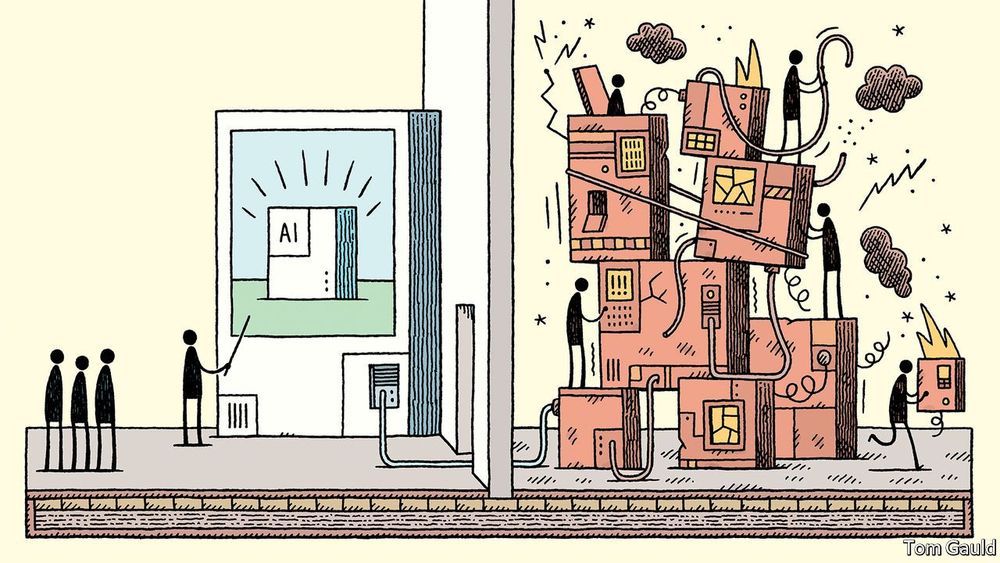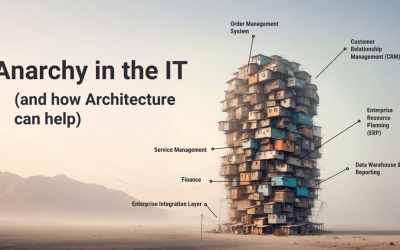Architecting for AI – Experiences and Considerations When Inviting AI Into Your Organisation
At Solution Architects we’re increasingly seeing many of our clients planning to implement or actively implementing AI into their organisation.
In our experience, solutions have been falling into two broad categories:
- AI to augment existing processes
- AI to replace existing processes
The first category of using AI to augment or supplement existing processes is where we’re seeing products such as AI enhanced search capabilities, AI product pricing, and AI powered chatbots being considered. Many of these solutions are sophisticated but are mostly AI in name only and lack in providing true cutting-edge AI capabilities.
The second category is where we’re seeing a more genuine application of AI technology with AI powered solutions being deployed to replicate or even surpass certain functions previously performed by humans. This application of the technology is becoming very prevalent in customer service and healthcare settings.
One additional category that we’re not so much as seeing but know exists, is the use of Shadow AI. This is where AI is being used informally within an organisation to expedite day-to-day tasks. While this can offer advantages to staff, there is no guarantee that the response provided by a chatbot is accurate or even correct.
Shadow AI also raises the additional risk that confidential information may accidentally or otherwise be uploaded to a chatbot. Such concerns need to be carefully considered and incorporated into organisational enterprise security principles and practices.
Implementing AI

One of the findings we’ve noticed when implementing an AI solution is that they are mostly not too dissimilar to implementing other technologies. Good fundamentals are still required in defining the business case, requirements, and expected outcomes. Organisations also need to have a good understanding of their existing processes and where they see the AI solution being incorporated into their overall process.
From a technology perspective, AI solutions are still subject to enterprise architecture principles and questions around the type of technology footprint required. Considerations relating to networking, security, integration, supportability, data, compliance, regulations etc. all need to be explored.
Additionally, AI solutions also raise several challenges that are more specific to the technology:
Evolving Technology – With changes in AI Technology happening on an almost daily basis there exists the possibility that a technology selected today may quickly become obsolete or surpassed by competitors. Not only does this complicate the selection process but it also presents an ongoing risk and an exit strategy should be planned if this eventuates.
Security of data and privacy – Data security and privacy is always a consideration, but AI solutions add another layer of complexity. Is the data being sent to the AI anonymised? How secure is the AI if hosted by a vendor? Who has access to the data? How secure is the AI itself and what data does it have or need access to? For example, chatbots can be hacked or tricked into providing more information than their creators may have originally envisioned.
Model Creation and Ownership – When deploying the AI solution, will organisational data be used to train and further improve the AI model? If so, then what data is required and how does it need to be prepared/cleansed? Is there a risk that the model trained on organisational data will be incorporated into a core AI model that may be available to other organisations? Such questions may impact decisions around hosting and competitive advantage of organisational data.
Accuracy and Maintenance – AI Models need to be monitored and updated to prevent model drift. It is recommended that such monitoring is incorporated into any solution so that action can be taken if the results being provided begin to deteriorate.
AI Vendor Risks – Many of the product suppliers coming into the market are small or inexperienced and may not have an ideal architecture or security due to having a startup/tech focussed mindset. We’re also seeing companies being bought out, merging, or closing down. The recommendation here is to ensure due diligence is performed on the vendor to ensure they will continue to operate and provide ongoing support/enhancements.
What If It Goes Wrong?
AI presents its own unique set of challenges to the organisation including the possibility of the AI no longer being available or functioning as expected. It is therefore recommended that the ability to pivot to an alternative be a key consideration when architecting a solution that leverages AI.
Whether pivoting means incorporating a new AI solution, selecting a “dumb” alternative, or simply shutting down the AI and reverting to a human will depend on the type of solution. But the key here is to at least have a strategy that will minimise disruption to the organisation.
How to Get it Right
Solution Architects have been working with our clients to implement AI solutions and providing support at the leadership, architecture, and technology levels. We at Solution Architects can assess the needs of your solution and provide valuable unbiased guidance and leadership to assist you in assessing AI product options and the ideal architecture for your solution.



